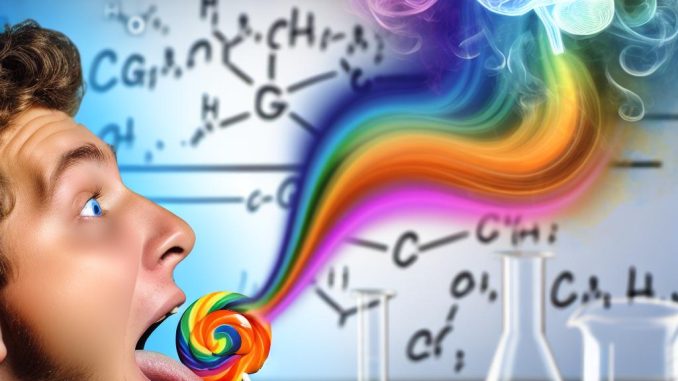
Understanding Synesthesia: A Blend of the Senses
Synesthesia is a fascinating neurological condition where one sensory experience involuntarily triggers another. Some individuals with synesthesia might hear sounds and simultaneously see colors or associate specific numbers with particular hues. Among these intriguing experiences, one of the most well-known forms is grapheme-color synesthesia, where individuals perceive letters or numbers as inherently colored.
What Causes Synesthesia?
Researchers are actively working to understand the neurological underpinnings of synesthesia. It is generally believed that synesthesia results from atypical cross-wiring in the brain. This condition may occur due to increased connectivity between regions of the brain that are otherwise separate. For example, someone who tastes shapes might have a greater number of connections between areas involved in taste and those involved in processing spatial information.
There is also a genetic component to synesthesia. It often runs in families, suggesting a hereditary basis. Different types of synesthesia might have different genetic and neural mechanisms, and several genes may be implicated in its occurrence.
Prevalence of Synesthesia
While synesthesia was once thought to be extremely rare, studies have shown it might be more common than previously assumed. Estimates suggest about 4% of the population experiences some form of synesthesia, though not everyone who has it is necessarily aware of their unique perceptual experiences.
The Impact on Daily Life
For many, synesthesia can enhance memory and creativity. Individuals with this condition often report that it aids in recalling information. For example, associating numbers or words with colors may make remembering phone numbers or names easier. Nevertheless, the intensity and impact of synesthetic experiences can vary widely among those who have them.
Some artists and musicians leverage their synesthetic perceptions to enhance their work, merging sensory inputs to create innovative pieces. Famous synesthetes include the artist Wassily Kandinsky, who often painted with an intention to evoke sound, and composer Oliver Messiaen, known for experiencing colors while listening to chords.
Research and Future Directions
The study of synesthesia is continually evolving. Modern neuroimaging techniques, such as fMRI and PET scans, have allowed scientists to gain a deeper understanding of the condition by highlighting active brain regions during synesthetic experiences. These insights might elucidate not only the peculiar sensory blend but also broader brain functions and connectivity.
The implications of studying synesthesia go beyond understanding the condition itself. It offers a unique lens into cognitive processes, brain plasticity, and how we perceive the world. This research might one day lead to applications or therapies for other conditions with sensory or perceptual components.
Far from being merely a scientific curiosity, synesthesia challenges our fundamental notions of perception and reality. By investigating how people experience synesthesia, it is possible to glean insights into the subjective experience of consciousness and awareness.
Moreover, exploring the genetic basis of synesthesia could illuminate how genetics influence neurological development more broadly. Given the familial patterns of synesthesia, future research may focus more intensively on identifying specific gene variants that influence these atypical sensory experiences.
In practical terms, understanding synesthesia might inspire innovations in fields like education, where educators could develop new strategies for memory enhancement based on synesthetic principles. Similarly, businesses in the design or music industry could further explore synesthetic experiences to enrich their creative processes.
For those interested in learning more or exploring recent studies, reputable scientific journals often publish articles on synesthesia and related neurological research. Exploring sources like Nature or ScienceDirect can provide valuable insights into current scientific inquiries and discoveries regarding this fascinating phenomenon.
In summary, synesthesia represents a compelling intersection of sensory processing, neuroscience, and genetics, standing as a vivid testament to the complexity and diversity of the human brain. As the study continues to unfold, it promises to unveil further mysteries of how we experience and interpret the sensory world around us, paving the way for new understandings in both scientific and artistic realms. By expanding on the known facts and continuously exploring its depths, researchers hope to unlock deeper insights into not only synesthesia itself but also broader aspects of human cognition and sensory perception.
